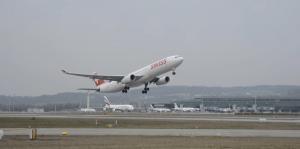This Science of Flight Take and Make STEM project will be available at area PPLD Libraries starting Nov. 13, 2020 and is intended for ages 5-12.
Watch these projects at: https://youtu.be/6W6ZtLCe1ow?list=PLMEg2Dd0dSFctLfDQxsL5SmuE8zkwQFmu
Materials provided in Take and Make:
- Plain paper
- Paper airplane template (also attached below)
- Rubber bands
- Whirly-gig or a Mars Helicopter, see https://www.jpl.nasa.gov/edu/learn/project/make-a-paper-mars-helicopter/
Materials you provide:
- Tape
- Hole punch (or something else to poke a hole)
- Scissors
The Science of Flight
Four forces of flight not only affect how an airplane flies, but also affect a paper airplane. These forces – lift, thrust, drag, and weight – determine how a plane will fly.
- Lift is the force that keeps the plane in the air. Lift works opposite the weight of the plane.
- Thrust is the force that propels the plane forward.
- Drag acts opposite to the direction of motion. This force is affected by friction and differences in air pressure.
- Weight is the force of gravity. The pull of an object toward the center of the earth.
In today’s Science of Flight activity, we’ll do several activities. Since paper airplanes are subject to the same forces as actual airplanes, think about the forces of flight and experiment to see what helps your plane fly straighter, more accurately, or farther.
Paper Airplanes:
Use the paper to create paper airplanes. See the pdf link below for the template. Which ones fly the farthest? Which has the best aim? How can you adapt them to change their flight? Test them out.
Paper Airplane catapult:
Start by using the template to create a paper airplane. Just fold on the numbers in order, always folding to the inside so you cover the number with the fold. Once your airplane is folded, punch or poke a hole through all layers about 2 inches from the nose of the plane. Push a rubber band through your hole and then put one end of the rubber band through the other and pull gently. Fly the airplane by hooking the rubber band to your thumb or finger, gently pulling back on the airplane, and then letting go of the plane. See how far it will go! Can you aim it?
Whirly-gig:
Take the whirly-gig in your Take and Make or go to the NASA link above to print out a Mars Helicopter template. On the end where the paper is divided in half, fold the halves in opposite directions. On the part that’s divided into thirds, fold the 2 outside parts in on the dotted lines and then fold the bottom up twice. Either toss the Whirly-gig straight up or drop it from a high place and watch it float down. Experiment with it.



